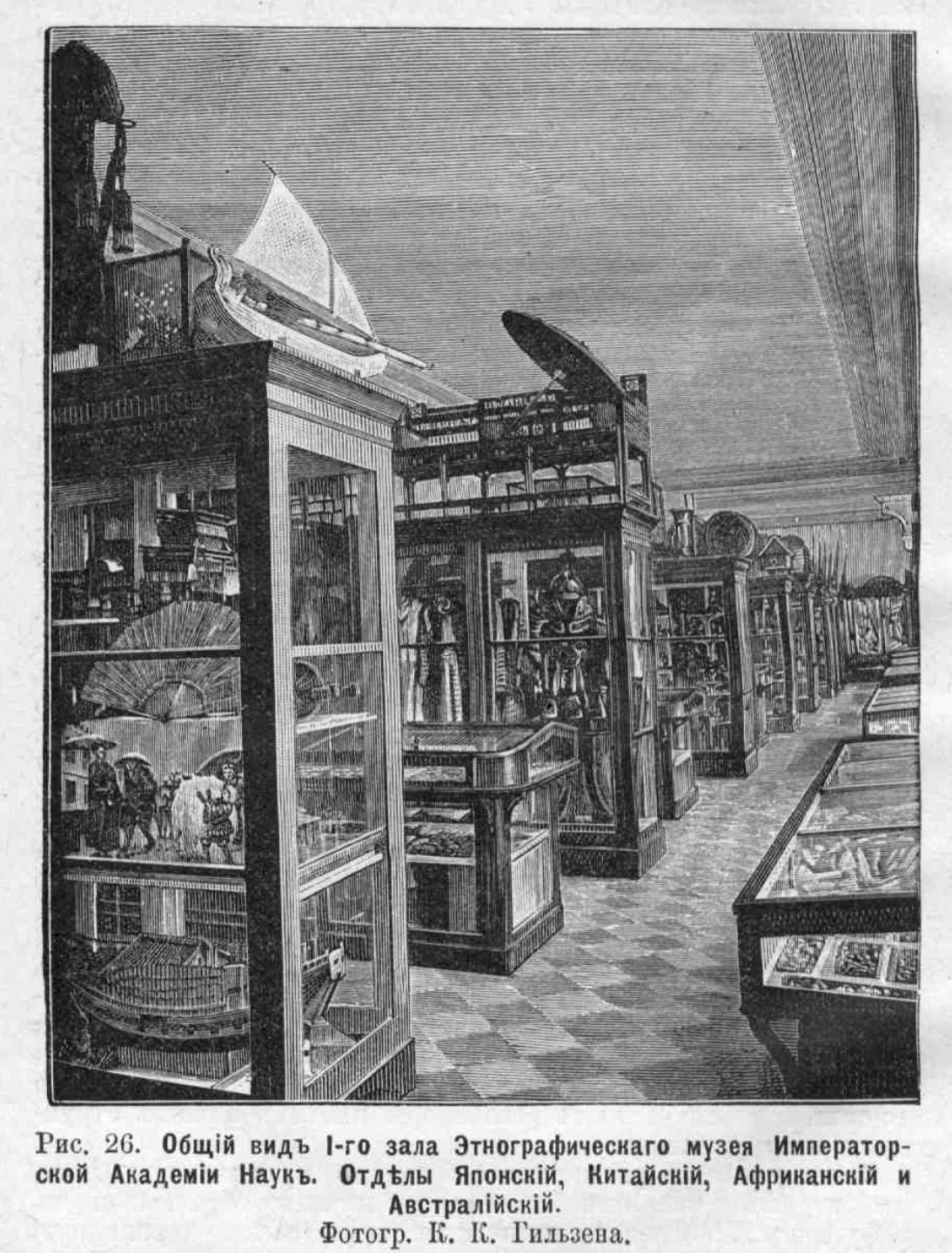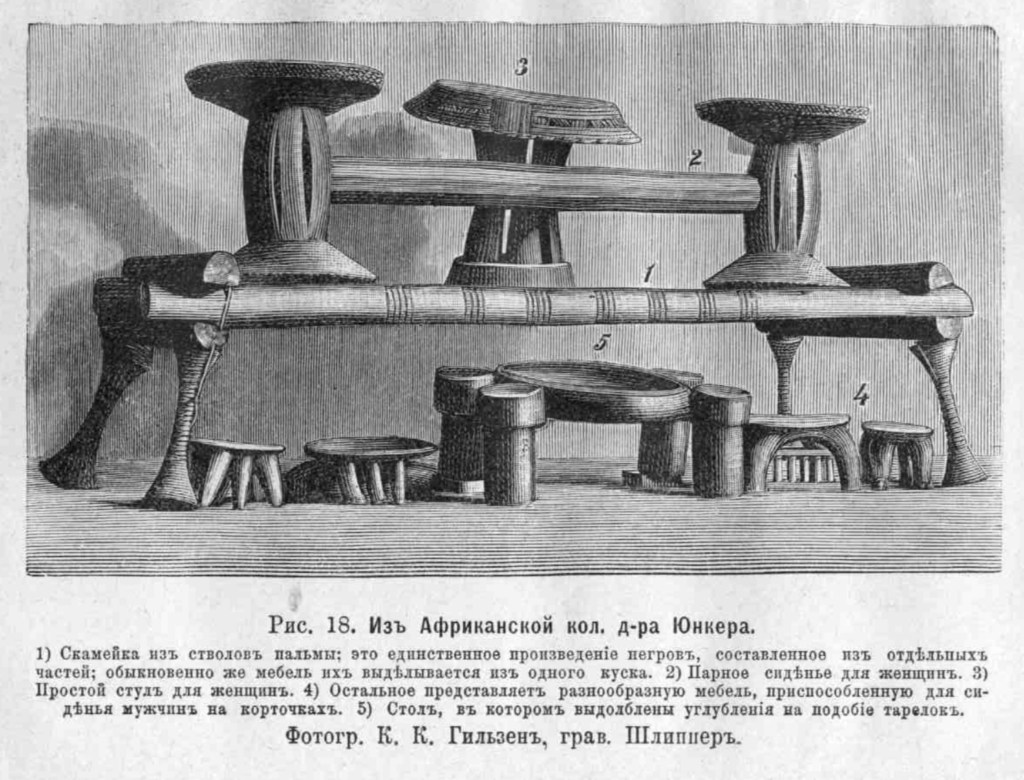Author
Eliseev, Aleksandr Vasil’evich (1858-1895)
Title
Iz istorii kul’tury. Ocherk, Sankt-Peterburg 1895
Titolo From the History of Culture. Essay
Keywords
Summary
The book bears the subtitle “Overview of the Ethnographic and Anthropological Museum of the Imperial Academy of Sciences (with twenty-six drawings from the photographs of K.K. Gil’tsen)”. In the introductory note, the author claims that the Ethnographic and Anthropological Museum is sadly virtually unknown to the public. And yet this museum greatly deserves attention, if only because it is devoted to the “king of creatures”: the human being. Hence, the museum can be seen as a Museum of Human Culture. The essay is divided into five main sections: Housing (with a short historic and geographic overview of human houses, from caves to increasingly more complex constructions of wood and stone), Clothing (featuring pictures and comments of different native traditional garments, from Sakhalin to the Americas and the African continent), Household utensils, Weapons and Tools of everyday life. The latter section features descriptions not only of everyday tools, but also of musical instruments that are still used by indigenous population of the African continent. The book ends on a photograph of one of the areas of the museum, where three main different sections can be discerned: Japanese and Chinese, African, and Australian. Many items of the museum collections were donated by Russian and international travellers.
Bio
Aleksandr Eliseev was a Russian doctor, traveller, and writer. Having served as a military doctor in Turkestan, the Baltic region, and Finland, Eliseev explored the northern regions of Russia, Finland, and the Urals. In 1881 he explored the Nile valley. In 1883 Eliseev crossed the deserts between the Nile and the Red Sea and travelled along the sea coast to Suakin, Massawa, and Aden. His most important journey to Africa began in 1884 from Tripoli. He travelled deep into the Sahara, crossed the Hamada el-Hamra plateau, but soon had to return to Tripoli. From there Eliseev went to Tunisia and visited the southern cities of Algeria, such as Constantine, Batna, Biskra. He also visited the oases of Ghadames, Touggourt, Ouargla, among others. In 1885 he went back to Algeria and subsequently returned to Russia. In 1893 Eliseev travelled to the Libyan desert, and in 1895 to Ethiopia, collecting anthropological, ethnographic and geographic material. He was a representative of the Palestine Society as physician at the military-medical department. Starting from 1878, he extensively described his travel experiences publishing them in Russian periodicals. For his contributions to geographical and anthropological research in Africa, the Russian Geographical Society awarded Eliseev with a silver medal.
Sources
M. Rait, Russkie ekspeditsii v Efiopii v seredine XIX-nachale XX vv. i ikh etnograficheskie materialy, “Afrikanskii etnograficheskii sbornik”, 1956, 1, p. 220-281;
M. Zabrodskaia, Russkie puteshestvenniki po Afrike, Moskva 1955;
B. Val’skaia, Vklad russkogo geograficheskogo obshchestva v izuchenie Afriki, “Strany i narody Vostoka”, 1969, 9, p. 5-18;
M. Gornung, I. Oleinikov, Geograficheskoe izuchenie Afriki v Rossii, in Izuchenie Afriki v Rossii (dorevoliutsionnogo perioda), ed. by A. Davidson, G. Nersesov, Moskva 1977, p. 30-71;
M. Zabrodskaia, Puteshestviia A.V. Eliseeva po Sakhare (1881-1893 gg.), “Strany i narody Vostoka”, 1987, 25.
M.E.
Gallery


